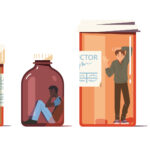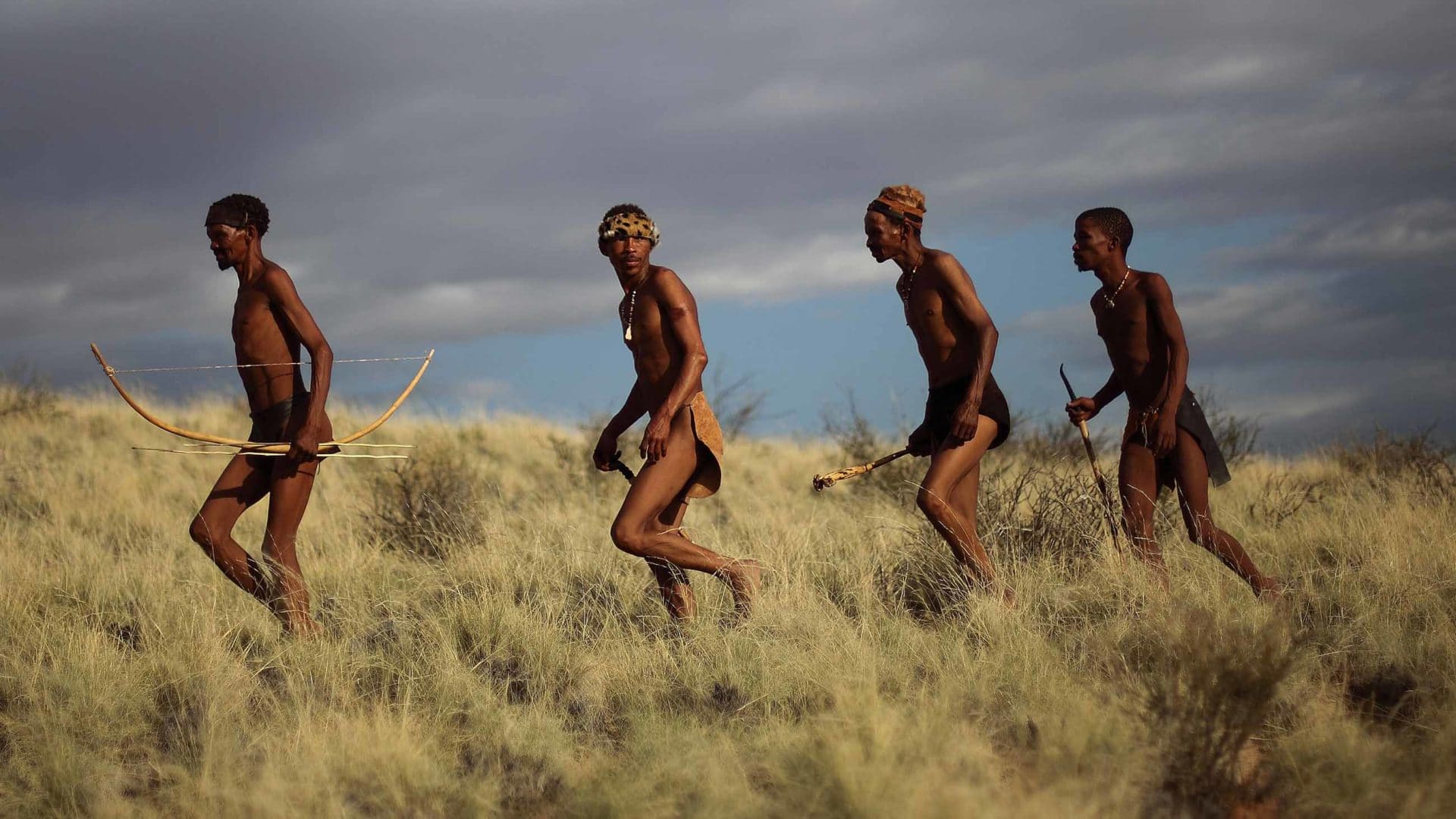For Vulnerable Populations, the Thorny Ethics of Genetic Data Collection
In 2009, researchers collected DNA from four elderly men in Namibia, each from one of the many San indigenous communities scattered across southern Africa. A year later, analyses of the men’s DNA were published in the journal Nature — alongside that of South African human rights activist Desmond Tutu. The intention, in part, was to increase the visibility of southern, indigenous Africans in genetic-based medical research. Soon after, a nongovernmental organization (NGO) representing indigenous minorities in Southern Africa took issue with the consent procedures used to gather the data and wrote to Nature’s editors accusing the paper’s authors of “absolute arrogance, ignorance, and cultural myopia.”
The San case highlights the thorny ethics of collecting genetic data. Yet today, to make medicine more equitable, scientists see the importance of sampling DNA from more diverse populations. Most genetic research uses DNA from descendants of Europeans, which means the related medical applications — such as genetic tests to see the likelihood of developing a certain disease, called polygenic risk assessments — can only benefit those populations. In 2018 in the United States, for example, the National Institutes of Health launched All of Us, a research program that aims to collect DNA, electronic health records, and other data, from about one million Americans with emphasis on including many different groups of people.
“When we do genetic studies, trying to understand the genetic basis of common and complex diseases, we’re getting a biased snapshot,” said Alicia Martin, a geneticist at the Massachusetts General Hospital and the Broad Institute, a biomedical and genomics research center affiliated with Harvard and MIT.
Research to capture these snapshots, called genome-wide association studies, can only draw conclusions about the data that’s been collected. Without studies that look at each underrepresented population, genetic tests and therapies can’t be tailored to everyone. Still, projects intended as correctives, like All of Us and the International HapMap Project, face an ethical conundrum: Collecting that data could exploit the very people the programs intend to help.
Researchers with All of Us have already collected data from about 1,600 Native Americans, some of whom live in cities outside of sovereign lands, where tribal approval is not necessary for genetic research, according to Krystal Tsosie, a geneticist at Vanderbilt University who is co-leading a study in collaboration with a tribal community in North Dakota .
“Obviously there’s an interest in monetizing biomarkers collected from diverse populations and underrepresented populations,” Tsoise said, so without adequate protections, “the concern becomes about exploitation.”
Medical genetic research generally works like this: Geneticists use powerful computers to compare the genomes of people affected by a particular disease to healthy controls. Researchers mark genetic patterns that are common in people with, say, diabetes, but not the controls, as ‘associated’ with the disease. The more samples geneticists feed to the algorithms, the more likely that the findings reflect reality.
But studies restricted to descendants of Europeans will only find associations between diseases and “variants that are common in European ancestry populations,” said Martin — if those variants are common enough to be found.
Scientists use the results to develop polygenic risk scores, which count the risky variants on someone’s genome to estimate their susceptibility to a disease. But if studies don’t use the genomes of non-white populations, the tests won’t pick up on the problematic variants in different groups of people. One 2019 Nature Genetics study, on which Martin was an author, determined that these blind spots reduce the accuracy of polygenic tests by approximately two and five times in South or East Asian, and black populations, respectively.
In many cases, the groups whose DNA is missing have worse health care outcomes compared to their white counterparts, and genetic medicine could worsen these disparities. “I think there’s a huge responsibility,” said Martin. “If we look at the history of the field, over the past decade we’ve gone from participants in genetic studies being 96 percent European ancestry to about 80 percent. We’ve shifted gears a little bit, but not nearly enough to be able to serve minority populations.” Jantina De Vries, a bioethicist at the University of Cape Town, agreed that “representation in genomics research can bring health benefits,” particularly if it is paired with measures to build research capacity so that, eventually, “there are researchers at every level” within the groups themselves.
Collecting broader genetic samples poses a host of challenges. Efforts to collect and study the genomes of indigenous peoples, for example, have been controversial since the early ‘90s. The first such project, called the Human Genome Diversity Project (HGDP), was meant “to explore the full range of genome diversity within the human family” by collecting DNA samples from about 500 distinct groups, with an emphasis on indigenous peoples that might soon “vanish.” Indigenous-rights organizations criticized the project, taking issue with being treated as mere objects of scientific interest and potential for commercialization. All of Us, more recently, has run into similar objections from the National Congress of American Indians.
The concerns are linked to the long history of exploitative encounters between researchers and vulnerable populations. The Tuskegee Study — in which the U.S. Public Health Service withheld treatment from African American men with syphilis — lasted from 1932 until 1972, ending less than 20 years before the HGDP proposal. And in 1989, researchers from Arizona State University collected DNA samples from the Havasupai Tribe and reused the data for research to which the participants hadn’t consented: on schizophrenia, inbreeding, and migration history. Tsosie said this context has created a “climate in which we’ve seen tribes deciding to disengage from biomedical research completely.”
All the geneticists and ethicists Undark spoke with agreed that community engagement is crucial to establish trust. But they didn’t agree on the degree of the engagement. Some believed that gaining the consent of communities is necessary for ethical research, while others said it was enough to have respect and open dialogue between researchers and the people they’d like to study.
But both approaches are difficult in the context of collecting and analyzing genetic data, since geneticists take DNA from individuals to make conclusions about entire populations. For instance, the San paper in Nature extrapolated findings regarding individual genomes to discuss the genomes of the broader communities. “One’s genome is not their own specifically; one’s genome is informed by their recent ancestry, their family structures, and their more distant ancestry,” said Tsosie. Geneticists are never “talking about an individual that’s siloed.”
The gap between individual and collective consent is partly responsible for the continued friction between genetic science and indigenous peoples. Collective consent, said Tsosie, who is herself Navajo, is “more culturally consistent with how tribal groups govern themselves.” In 2017, Andries Steenkamp, a San leader, and Roger Chennells, a lawyer, wrote that the Nature study failed in this regard by only getting “informed consent from the indigenous individuals who participated.”
Not everyone agrees that collective consent can or should be a requirement for all genetic studies. For instance, de Vries said, “it depends what sort of community we’re talking about,” drawing a contrast between small, rural, communities and larger populations spread across several cities or countries. “If we’re talking about the entire Yoruba population, who would you even talk to?” she added. The Yoruba are an ethic group of more than 20 million individuals, most of whom live in Nigeria, with smaller populations in Benin, Togo, and across several diaspora communities. De Vries believes the onus lies on researchers to “think in terms of respecting communities,” rather than in terms of collective consent.
Gaining collective consent involves logistical hurdles, especially for large-scale projects. The NIH’s All of Us program, for example, wasn’t able to get input from each of the 573 federally-recognized tribes. According to Tsosie, during the planning stages, “there was talk of gaining tribal input, but that plan seemed to be abandoned early on.” The All of Us website does have a section on tribal engagement, but only offers “formal consultation and listening sessions” for ongoing projects, not guidance on how to approach these issues before a project starts.
Among non-indigenous policymakers and scientists, Tsosie noted, there’s a “magical notion” that stakeholders from every tribe can be brought together in one room “when, in reality, that is not how we make consensus decisions for ourselves.”
Even more difficult than logistics, perhaps, may be conceptualizing the genetic studies to begin with — for example, deciding which people belong in which groups. “One of the greatest political acts, acts of power, that we perform as human beings is dividing ourselves up for the purpose of knowing and governing ourselves,” said Jenny Reardon, a sociologist who specializes in genomics at the University of California, Santa-Cruz.
Globally, indigenous peoples are so culturally distinct from one another that a single understanding of a community won’t resonate with everyone. Finding a method for data collection “that crosses all indigenous groups is going to be really hard,” said Vanessa Hayes, a geneticist at the Garvan Institute of Medical Research and the University of Sydney in Australia who conducts fieldwork in South Africa. “Because, straightaway, that’s assuming all indigenous people are the same.” Without common ground, scientists must do the hard work of understanding each unique community. As Hayes put it, “every group that you work with, you have to respect that group, and take the time to understand what is important in that group.”
Hayes was one of the authors of the 2010 Nature study on the San, and she was responsible for obtaining consent, gathering samples, and discussing the results with the community. While Steenkamp and Chennells suggested the researchers were hasty in their data collection and ignored governance structures, Hayes countered that, at the time of the study, she’d already been working in these communities for more than a decade and they were working directly with government agencies. She’d been in contact with the Working Group of Indigenous Minorities in Southern Africa (WIMSA) — the NGO which would eventually criticize the study — before it began. But, she said, “when I went back to the community and asked if they knew who WIMSA was, they said ‘no.’ I asked them if they wanted WIMSA to represent them, and they said, ‘Hell no.’”
(As an organization, WIMSA is currently being restructured. The South African San Council, which now represents the San communities of South Africa, declined an interview with Undark, citing a requirement for financial compensation and a signed contract.)
Hayes followed the principles of collective consent, she said, just at a lower level than formal institutions like WIMSA or the San Council: “Their decision was made as a group. They are the group, they are the band, they are the family.” She added, “No one can represent them that is not them.”
The difficulties in defining a group make collective consent even more challenging.
In the clearest of circumstances, where an established organization exists, approval processes can be difficult to navigate and can take months. But within some indigenous and minority groups, issues of representation remain controversial. Often, a scientist will have to invest a lot of time interacting with potential subjects in order to judge what consent procedures are appropriate. Few scientists have the necessary time and resources.
There is no easy way to choose which organizations to deal with, especially when there are internal disagreements about representation. Or, as Reardon put it: “The folks that are trying to democratize the science are going to have the same problem as the people who were attempting to treat it as ‘We’re just going to go out and get these groups, and study them from a scientific perspective.’”
Although the repeated controversies surrounding research and indigenous groups may have slowed their inclusion in genetic science, the researchers Undark spoke with said ensuring these concerns are heard and addressed is a vital part of the work. Indigenous groups are demanding a greater say in research that concerns them, whether under the All of Us program or conducted by individual researchers in Africa. Resolving the ethical ambiguities is no easy task, but, as Hayes asked: “Why should it be easy?”
Adrian Pecotic is a freelance writer based in Sarajevo. He’s written for the TLS, Foreign Policy, and NBC think. He also blogs for Psychology Today.











Comments are automatically closed one year after article publication. Archived comments are below.
Stephen, if we seek to better understand the diversity, we cannot confirm, nor deny, that political entanglements won’t arise. Nothing can ever be guaranteed from political or religious infringement. However, if we can look solely upon a scientific basis, we might consider advancements in science that far exceed medical advancements as we now know them. Let’s think scientifically and leave it at that.
You wrote: “….extending the potential benefits and insights of genetic testing to “long-underserved” ethnic groups.” That is where I stopped reading your piece. Your wording implies purposeful discrimination toward people of color, when it is a matter of money to pay as well as availability and those willing to participate. Little droplets of the wrong words can fill volumes about the writer. The Marxist community is very skilled with such embedded propaganda, all the while wishing for Nirvana which will never exist among Man, considering all the evil Man has done over history and yet to do.
Sorry Snowflake! It’s no tragedy you stopped reading when you saw the offending sentence! You act like you are punishing them for the offensive words. Why don’t you grow a pair, and enjoy it while ethical science progresses. You would have it degenerate to you own level. If you can’t handle it like this then go hide under a rock! Also how the Hell is the word “underserving” conflated with “discriminating against”? It sounds as if you have a problem with your reading comprehension skills?! Oh I forgot, you were triggered and didn’t read the whole article.
How might the knowledge gained from genetic research shape human evolution in the future? Might certain indigenous groups have traits that will be better suited to future condtions such as climate change? Is maintaining genetic diversity in humans as important as we believe it is in animals where some populations are listed and protected under endangered species laws while other populations of the same species that are doing well are exploited? Are we even capable of thinking about such things or just living in a state of delusion driven by reseach grant seeking?